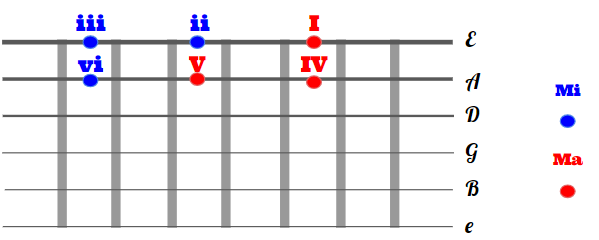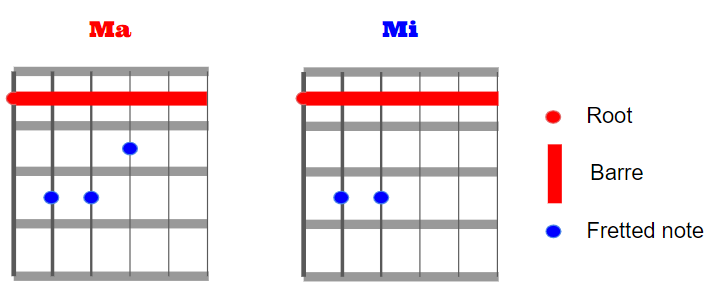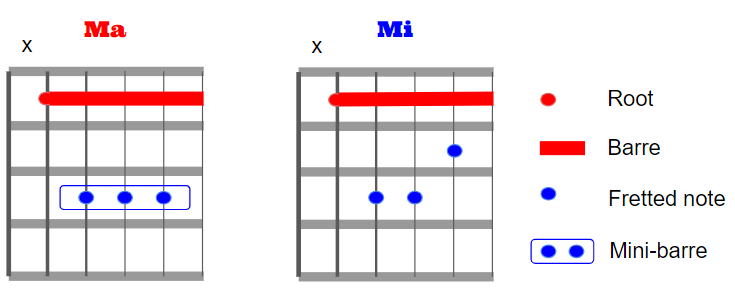While some explanations pop-up here and there, somehow I never can find a visual clue when I look for it. So here it is.
So you want to play a Major chord progression, so the first chord is major, intervals formulae W-W-H-W-W-W-H, this does NOT work for the minor scale. But how to find the chords that fit into that? There is an easy (visual) way! Just use the 6th and 5th strings as root notes and there you have your progression. The I-ii-iii-IV-V-vi-vii(dim) progression can be visualized on a fretboard in the following way:

So starting on the chord on a 6th string you can construct any progression using this pattern. As for chords, any one of them can be played using the following patterns:
6th string chord pattern

5th string chord pattern

Notes on the fretboard
The following two sections show the natural notes on the lowest two strings.
Natural notes on 6th string
- E (open string)
- F (1st fret)
- G (3rd fret)
- A (5th fret)
- B (7th fret)
- C (8th fret)
- D (10th fret)
- E (12th fret)
…and after 12th fret the story repeats.
Natural notes on 5th string
- A (open string)
- B (2nd fret)
- C (3rd fret)
- D (5th fret)
- E (7th fret)
- F (8th fret)
- G (10th fret)
- A (12th fret)
…and after 12th fret the story repeats.
Chord progressions examples
Let’s have a look at the most popular chord progressions:
I-V-vi-IV progression in the key of G
This is most likely the most popular progression in the Western pop music. Let’s start on the G note (3th fret of the 6th string), then the I-IV-V progression will be:
- G (6th string, 3th fret)
- D (5th string, 5th fret)
- Em (5th string, 7th fret)
- C (5th string, 3th fret)
I-IV-V progression in the key of A
This progression is used in in the ol’ good rock’n’roll and modern rock music. Starting on the A note (5th fret of the 6th string) the I-IV-V progression will be:
- A (6th string, 5th fret)
- D (5th string, 5th fret)
- E (5th string, 7th fret)
I-vi-IV-V progression in the key of C
This chord progression was very popular in the ’50s, so if you’re in that kind of music it may come handy.
- C (6th string, 8th fret)
- Am (5th string, 12th fret)
- F (5th string, 8th fret)
- G (5th string, 10th fret)
Enjoy!